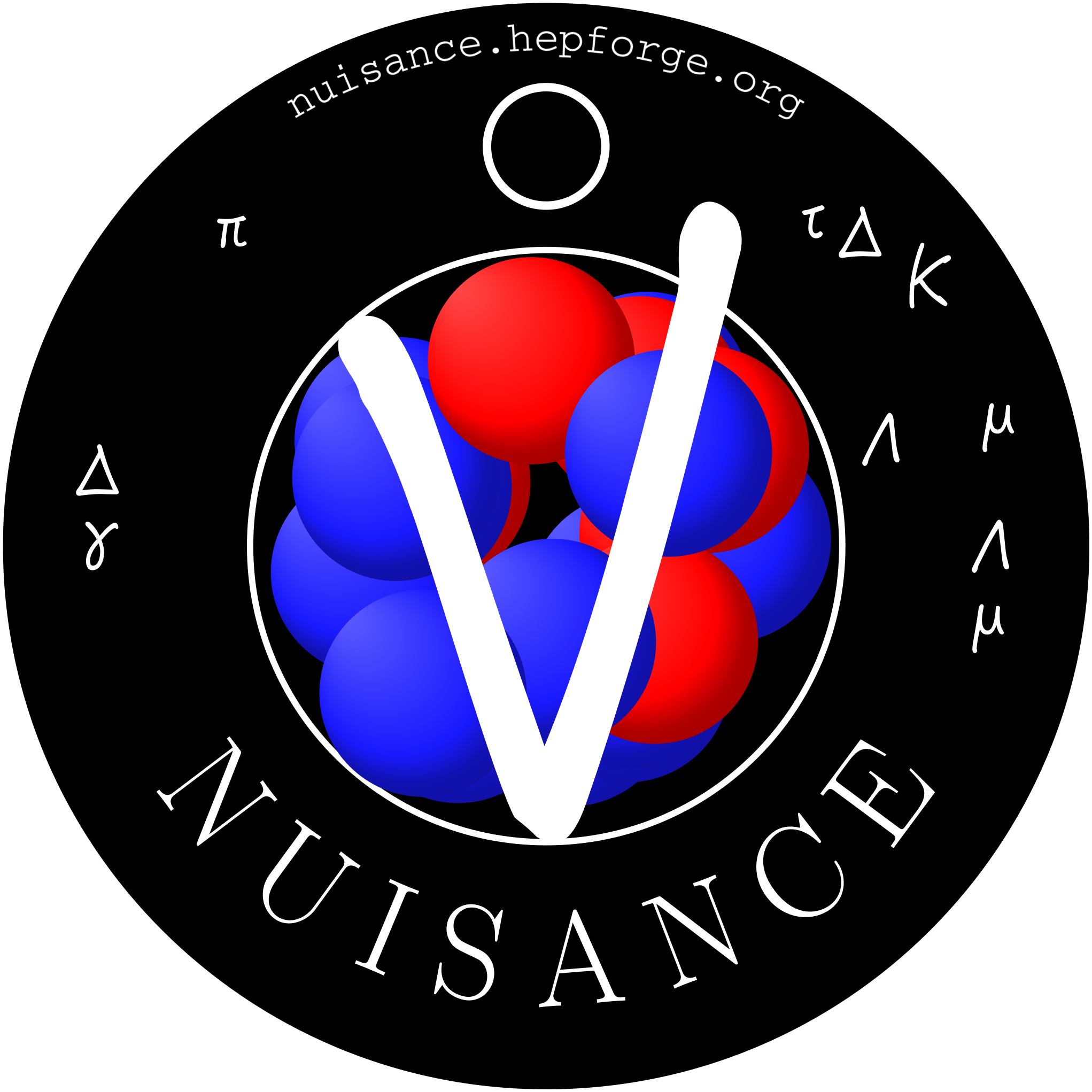| Version 1 (modified by , 9 years ago) (diff) |
|---|
JOINT Inputs
Some generators do not support combined beams or targets. The JOINT input type allows NUISANCE to combined different beam files at run time producing a composite input. NOTE: Inputs from different generators cannot currently be merged, you cannot mix a NEUT and GENIE MC file into a single JOINT input.
How it works
For each entry in a given list of input files NUISANCE will temporarily create an InputHandler? and use it to extract the total rate, flux, and number of entries.
A TChain is then formed for the provided generator type and each input is added into the list. NUISANCE keeps track of how many entries were in each TTree and uses this to calculate a separate scaling factor for each set of events. When a JOINT input is being used this scale factor is assigned as the FitEvent?.InputWeight? value to allow it to be propagated to the event predictions.
To get the best results and ensure that the statistical error on each sample is correct we suggest that the number of events in each sample is proportional to the relative flux integral of each component. For example if generating 1 million events with a numu + numubar flux with integrals of 150 and 500 respectively (arbritrary norm), then the number of events in each sample should be numu=230,769 and numubar=769,230.
Writing a JOINT input
A joint input is simply a list of the normal NUISANCE inputs saved into a text format. Examples are below.
neut_miniboone_rhc_numu_numubar.txt
NEUT:/data/events/neut/miniboone/rhc_numubar.root NEUT:/data/events/neut/miniboone/rhc_numu.root
genie_minerva_fhc.joint
GENIE:/data/events/genie/minerva/fhc_numu.root GENIE:/data/events/genie/minerva/fhc_numubar.root GENIE:/data/events/genie/minerva/fhc_nue.root GENIE:/data/events/genie/minerva/fhc_nuebar.root
